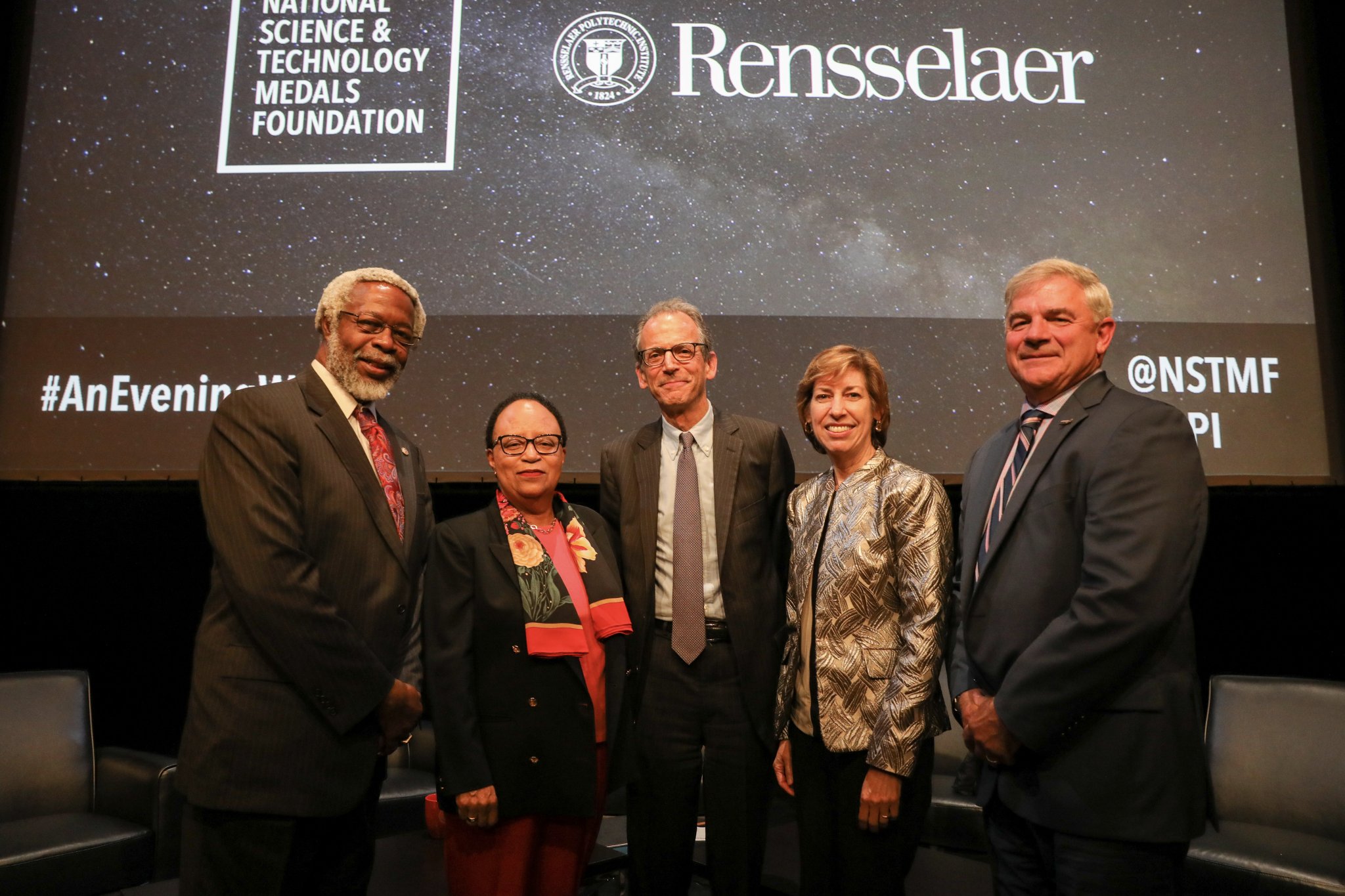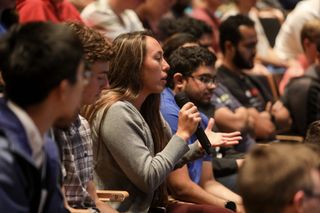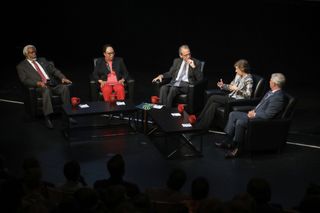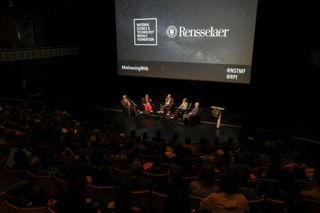How to Get to Mars: 'Trailblazing' Experts Talk Red Planet Exploration

A monthslong journey. Docking on a faraway moon. What scenarios would make a human voyage to Mars possible?
In late September, four experts participated in an hourlong conversation about what a mission to Mars would actually look like. "An Evening with Trailblazers — Are We Going to Mars?" took place at the Rensselaer Polytechnic Institute in Troy, New York, on Sept. 26.
"There's a romantic aspect to this," theoretical physicist Sylvester James Gates Jr. said during the event. "Because Mars, of all of our sister planets, is the one that has had the most impact on our culture — in the last several hundred years — as a place to go and think about." [If We Want to Walk on Mars, We'd Better Get Serious About Planetary Protection]

Ellen Ochoa, former space shuttle astronaut and previous director of NASA's Johnson Space Center, explained some challenges in designing a voyage to Mars.
"We've looked at a variety of different things," Ochoa said. "And one of the things that you have to grapple with immediately is … there're really only kind of two choices: You're there [on Mars] for a couple of weeks, or you're there for almost a year."
Ochoa said the short-mission option might involve orbiting the planet or landing on one of Mars' low-gravity moons, where the crew might attempt to send robots to work on the planet's surface before attempting a human landing. And a longer mission might involve bringing humans to Mars' surface and performing a closer analysis of the Red Planet's regolith, or dust, to perhaps learn if it could be turned into a propellant, she added.

Ochoa also detailed the challenge of combating harmful radiation: "The problem with the radiation, the galactic cosmic rays, is that you're getting this constant dose the entire time," she said. Radiation may increase a crew's risk for cancer and alter their cognitive ability, according to Ochoa. To help deal with this problem, researchers could focus on designing a magnetic shield to protect passengers and learning how genetic factors play a role in susceptibility to radiation.
Get the Space.com Newsletter
Breaking space news, the latest updates on rocket launches, skywatching events and more!
Shirley Ann Jackson, a theoretical physicist and president of Rensselaer Polytechnic Institute, affirmed during the panel discussion that these are all possible hazards. "But in many ways the real challenge, from a technological point of view, is that they are really intersecting challenges and vulnerabilities" that could be treated by looking into the research of other disciplines. "But therein lies opportunity," she said.
Jackson proposed that mission team designers might learn by observing fields of science such as biology and oncology to develop deep-space spaceflight materials.
Would collaboration across governments, like Jackson argued for across scientific disciplines , be necessary, too? [Hulu's 'The First' Confronts the Drama of Getting Humans to Mars]

"Right now, there's plenty of competition going on," Thomas E. Zelibor said during the event. He is the CEO of the Space Foundation, a nonprofit organization that advocates for space activities. "If you look at the commercial enterprises that are launching into space versus, as I call them, the industrial military complex, [or] traditional people that we think of, there's a tremendous competition going on. But I think they're going to be forced into a cooperative environment," Zelibor said. Otherwise, he said, "there's just not enough money to do it."
NASA has moved in the direction of private company partnerships over the last 10 years, according to Ochoa. "We [at NASA] really changed our model in terms of how we work with companies... we are now buying services; we don't own the spacecraft," Ochoa said. Companies now have more decision-making power about how they will meet spaceflight requirements, she added.
Ochoa said companies are free to look for other customers, too. "NASA's still clearly the anchor customer for human space exploration... there's really no other big customer out there, but there's the hope that it will grow," Ochoa said. "So, we've really changed the model of how we work."
A full recording of the event, called "An Evening with Trailblazers — Are We Going To Mars?" is accessible here.
Follow Doris Elin Salazar on Twitter@salazar_elin. Follow us @Spacedotcom, Facebook and Google+. Original article on Space.com.
Join our Space Forums to keep talking space on the latest missions, night sky and more! And if you have a news tip, correction or comment, let us know at: community@space.com.

Doris is a science journalist and Space.com contributor. She received a B.A. in Sociology and Communications at Fordham University in New York City. Her first work was published in collaboration with London Mining Network, where her love of science writing was born. Her passion for astronomy started as a kid when she helped her sister build a model solar system in the Bronx. She got her first shot at astronomy writing as a Space.com editorial intern and continues to write about all things cosmic for the website. Doris has also written about microscopic plant life for Scientific American’s website and about whale calls for their print magazine. She has also written about ancient humans for Inverse, with stories ranging from how to recreate Pompeii’s cuisine to how to map the Polynesian expansion through genomics. She currently shares her home with two rabbits. Follow her on twitter at @salazar_elin.











